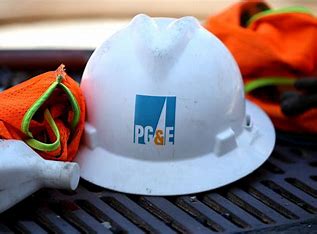Certainly, let’s delve deeper into the situation surrounding PG&E’s delayed payment and the broader context of its financial challenges and regulatory scrutiny.
Pacific Gas and Electric Company (PG&E), one of the largest utility companies in the United States, has faced significant financial strain in recent years, largely stemming from its role in several devastating wildfires in California. In response to these wildfires, which were exacerbated by factors including equipment failures and inadequate vegetation management, PG&E was compelled to seek a $7.5 billion bailout to cover liabilities and compensate affected parties.
As part of the bailout agreement, PG&E was required to make a substantial payment into a fund designated for repaying customers affected by the wildfires. The original deadline for this payment was March 31. However, PG&E approached regulators seeking permission to delay two-thirds of the $1 billion owed to customers, citing financial constraints.
The California Public Utilities Commission (CPUC), responsible for overseeing utilities in the state, granted PG&E’s request but emphasized that the full amount must be paid if the fund intended to reimburse customers runs dry. This decision by the CPUC has sparked debate and criticism from various quarters.
Critics, including Steve Weissman, a former CPUC regulatory judge, raised concerns about PG&E’s management and financial transparency. Weissman highlighted the potential implications of PG&E’s failure to meet its obligations, suggesting that it signals deeper issues within the company that warrant regulatory scrutiny.
PG&E attributed its inability to make the full payment by the deadline to delays in regulatory approval for its plan to sell off a $3.5 billion stake in its assets, including dams and power plants, as a means to raise necessary funds. However, this proposed solution faced obstacles when a CPUC regulatory law judge rejected it on grounds of ambiguity and the potential for adverse effects on rates.
Former CPUC president Loretta Lynch echoed skepticism regarding PG&E’s financial narrative, questioning the company’s assertion of being in a true financial bind despite reporting substantial profits and securing recent rate increases. Lynch cast doubt on PG&E’s claim of insufficient funds, suggesting that it contradicts the company’s financial performance.
PG&E defended its position by stating that it had reinvested a significant portion of its profits back into its infrastructure and operations. The company intends to address the rejection of its asset-selling plan and await further decisions from the CPUC regarding the judge’s findings.
Overall, the situation underscores the complex financial challenges facing PG&E and the ongoing scrutiny it faces from regulators and stakeholders alike. The company’s ability to navigate these challenges and fulfill its obligations while maintaining financial stability remains a topic of significant interest and concern.
